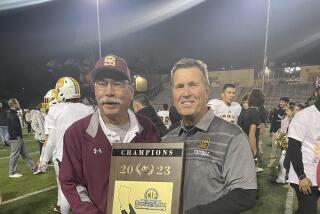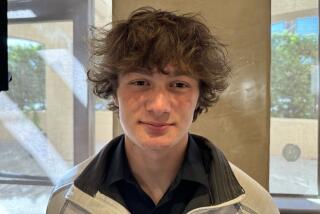DONOR PROGRAM : Parting Gifts : Contributing tissue to the American Red Cross can turn a loved one’s death into a lifesaving event for another.
- Share via
Representatives from the Ventura County coroner’s office had already arrived at Simi Valley Hospital and were waiting to pick up the body of the young man killed in a motorcycle accident.
But before they could take the body, the man’s family had a choice to make: donate the deceased’s tissue as he, himself, had requested on a donor card, or keep him whole.
“The mother was very hesitant,” said hospital chaplain Paul Mathis. “She turned to the siblings and, basically, it was, ‘If that’s what he wanted to do we should do it.’ ”
But the mother’s doubt said more to Mathis than the signed donor card, and he talked her out of signing the actual permission form. “It’s part of being sensitive to the needs of the family,” said the chaplain. “They’re going through enough with the tragedy.”
This case, which occurred a few years ago, is typical of what Mathis deals with an estimated 120 times each year.
Mathis plays a central role in Simi Valley Hospital’s tissue donor program, through which skin, bone, heart valves, tissue, certain veins, ligaments, and tendons are made available to the American Red Cross. (The Lion’s Club Doheny Eye Bank accepts donations of corneas.) Mathis is usually the person who discusses the donation options with surviving family members.
Last week, Simi Valley Hospital was honored for its contribution to the Red Cross program. Red Cross officials said that in 1992 the hospital was among the top four tissue donors in its seven-county Southern California region.
“Because of Simi Valley Hospital’s activity, over 300 units of bone were provided,” said Jan Waller of the Red Cross’ Los Angeles office. Waller said the 300 units of bone served about 250 patients with orthopedic defects. The hospital’s donation of 50 units of skin helped about 12 patients. Valve donations helped four or five patients last year and vein donations saved the legs of more than six people through reconstruction of the circulatory system.
“Somehow it brings a sense of good out of tragedy,” said Mathis. “A person can donate almost anything.”
Mathis arrived at Simi Valley Hospital in 1984, a year before the Red Cross tissue program hit full stride in Southern California. Mathis had no clinical background, he said, but as he was helping families with post-mortem plans, it made sense that he would talk to them about donating parts.
“Say there’s a death in the emergency room. A patient will come in and part of what I do is work with the family to keep them apprised of the situation,” he said. “Once death has been pronounced the doctor comes out and talks to them about that.” After the talk, Mathis stays around to counsel the family.
“We spend some time dealing with grief and tragedy itself,” he said. Mathis said he helps families with funeral plans and then talks to them about donating tissue. He said he informs the family that removing tissue is not disfiguring, it is free, and it won’t delay their plans for the body.
“After a lot of years of doing this I have no problem with working with families and death situations at all,” said Mathis. “However, there’s always a little something--you hate to jump in, but you do it because it’s the right thing to do. Who knows? It might be me who needs a cornea, or my child who needs the piece of bone. If they say no, that’s fine. It’s our job to offer the option.”
Though Mathis feels comfortable offering that option, he said many health practitioners don’t.
That’s why he has given seminars on how to talk to families about donation. Mathis has led discussions at Simi Valley Hospital and has gone outside the hospital to speak to nursing students. He is planning to speak at a nursing class at Moorpark College.
Meanwhile, the Red Cross’ Ventura County chapter is working to educate the public about the donation option. Executive Director Brian Bolton said the chapter will distribute written material on the subject and will speak to civic groups later this year.
“We hope to encourage the community to realize the value (of tissue donation),” he said. “Hopefully we won’t run into situations where there simply aren’t tissues available in the bank.”
More to Read
Sign up for Essential California
The most important California stories and recommendations in your inbox every morning.
You may occasionally receive promotional content from the Los Angeles Times.













